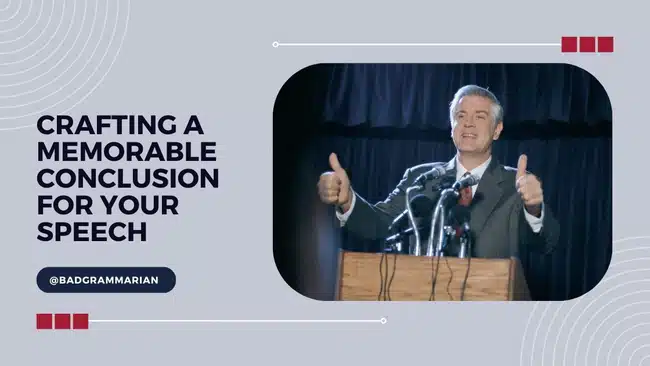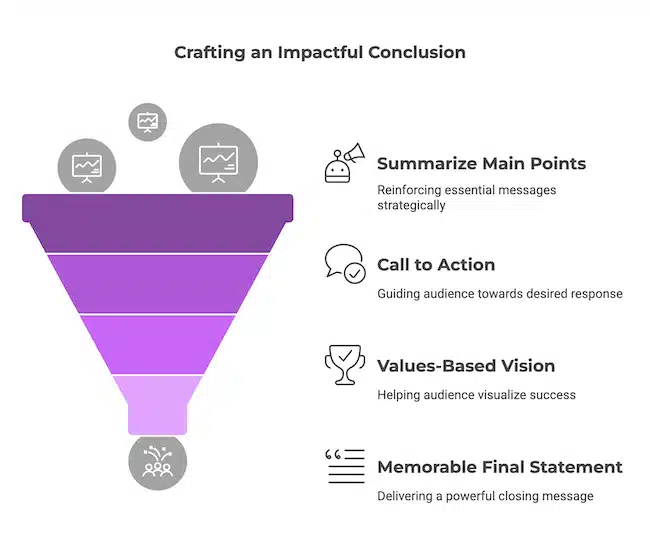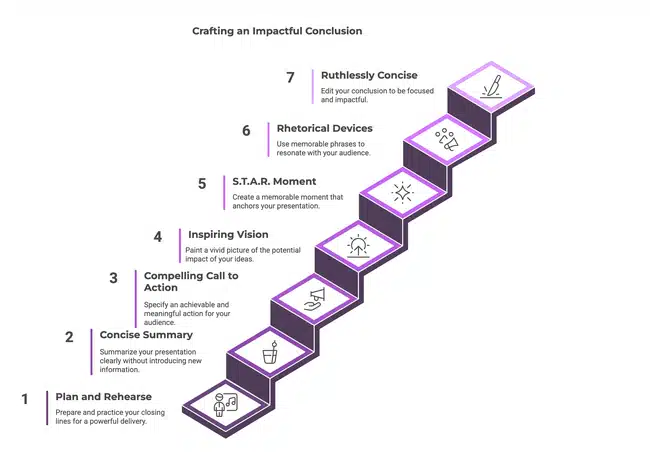Best Noise-Canceling Headphones for Writers: Enhance Focus and Creativity
Craft a Memorable Conclusion for Your Speech

The conclusion is arguably the most critical element of any speech. What you say last is what your audience is most likely to remember, making your closing remarks the perfect opportunity to reinforce your core message and leave listeners with a lasting impression that inspires action.
Why Your Conclusion Matters
A powerful conclusion serves multiple purposes: it solidifies your key points in the audience's mind, provides emotional closure, and transforms your ideas into actionable insights. Research shows that audiences remember the beginning and end of presentations most clearly—with the conclusion having the most significant potential for long-term impact.
Key Elements of an Effective Conclusion
Summarize Your Main Points
Briefly revisit the key ideas you've presented, reminding your audience of your core message. This isn't simply repetition—it's strategic reinforcement that helps cement your most essential points.
Deliver a Clear Call to Action
Don't leave your audience wondering, “Now what?” Tell them precisely what you want them to do with the information you've shared. Be explicit about the desired response, whether changing a behavior, adopting a new perspective, or taking concrete steps.
Paint a Values-Based Vision
Transform abstract concepts into a compelling vision of possibility. Help your audience visualize what success looks like when your ideas are implemented, connecting your message to their deeper values and aspirations.
Craft a Memorable Final Statement
Plan your closing statement with extreme care. These final words should be concise, powerful, and purposefully crafted to echo in your audience's minds long after you've left the stage.
For more great resources to help with your speech, check out our List of Best Books on Public Speaking
Actionable Steps for Crafting Your Conclusion
Plan and Rehearse Your Ending
Your conclusion deserves as much preparation as your opening. Know exactly how you'll close—nearly word for word—and practice delivering these lines until they feel natural yet powerful.
Create a Concise Summary
Distill your presentation into its essential elements. Avoid introducing new information; instead, reinforce what you've already established in a way that is clear and coherent.
Design a Compelling Call to Action
Be specific about what you want your audience to do next. Frame this action as achievable and meaningful, connecting it directly to the benefits outlined throughout your speech.
Develop an Inspiring Vision
Paint a vivid picture of what's possible when your ideas are embraced. Use sensory language and emotional appeals to help your audience feel the potential impact of your message. From Ted Talks: The Official TED Guide to Public Speaking by Chris Anderson:
Can you turn what you’ve discussed into an inspiring or hopeful vision of what might be? Many speakers try. The late Rita Pierson, who gave a beautiful talk on how teachers need to build real relationships with their kids, ended with this:
Teaching and learning should bring joy. How powerful would our world be if we had kids who were not afraid to take risks, who were not afraid to think, and who had a champion? Every child deserves a champion, an adult who will never give up on them, who understands the power of connection, and insists that they become the best that they can possibly be. Is this job tough? You betcha. Oh God, you betcha. But it is not impossible. We can do this. We’re educators. We’re born to make a difference. Thank you so much.
Engineer a S.T.A.R. Moment
Create a “Something They'll Always Remember” moment. An idea from Nancy Duarte's excellent presentation book, Resonate, suggests creating a profound statement, unexpected revelation, or powerful image that anchors your entire presentation in their memory.
Employ Rhetorical Devices
Use techniques like groups of three or contrasting ideas to create memorable phrases that connect with your audience. Also, from Resonate, Duarte suggests that once you've crafted your key message, make it unforgettable through strategic repetition—stating your core phrase multiple times throughout your conclusion reinforces its importance. Create deliberate pauses after delivering critical points, giving listeners time to process and potentially note your exact words.
Be Ruthlessly Concise
Edit your conclusion to its essential elements. A focused, tight closing is far more powerful than a rambling one—aim to leave your audience wanting more rather than checking their watches.
Here are some online courses to help with your speech, our list of Best Online Courses on Public Speaking
Common Pitfalls to Avoid
The Apologetic Exit
Never end with apologies or statements like “That's all I have” or “I guess I'll stop now.” These undermine your authority and dilute your message. Instead, finish with confidence and conviction.
The Flat Finale
Avoid endings that peter out. If your conclusion lacks impact, your entire speech may be forgotten. Ensure your closing builds energy rather than dissipating it.
The New Idea Introduction
Resist the temptation to add new concepts to your conclusion. This moment is for reinforcement and inspiration, not new information that might confuse your audience.
The Over-Extended Ending
Don't signal the end repeatedly without actually concluding. When you say you're finishing, do so promptly and powerfully.
Examples of Powerful Conclusions
Consider how great speakers end their presentations:
- The Circular Reference: Return to a story or example from your introduction, now with a new meaning.
- The Provocative Question: Leave your audience with a thought-provoking question that extends your message.
- The Powerful Quote: Close with a relevant, impactful quotation that encapsulates your message.
- The Personal Challenge: Issue a direct, personalized challenge to each listener.
Final Thoughts
Your conclusion is your last opportunity to influence your audience—make it count. With careful planning and deliberate practice, you can craft a conclusion that summarizes your message and amplifies its impact, leaving your audience moved, inspired, and ready to act. Remember that how you end your speech determines how your audience will begin responding to your ideas.
Yes! I want Bad Grammarian updates and promotions!
No Spam Zone. We will never spam or sell your email address!
Yes! I want Bad Grammarian updates and promotions!
No Spam Zone. We will never spam or sell your email address!




